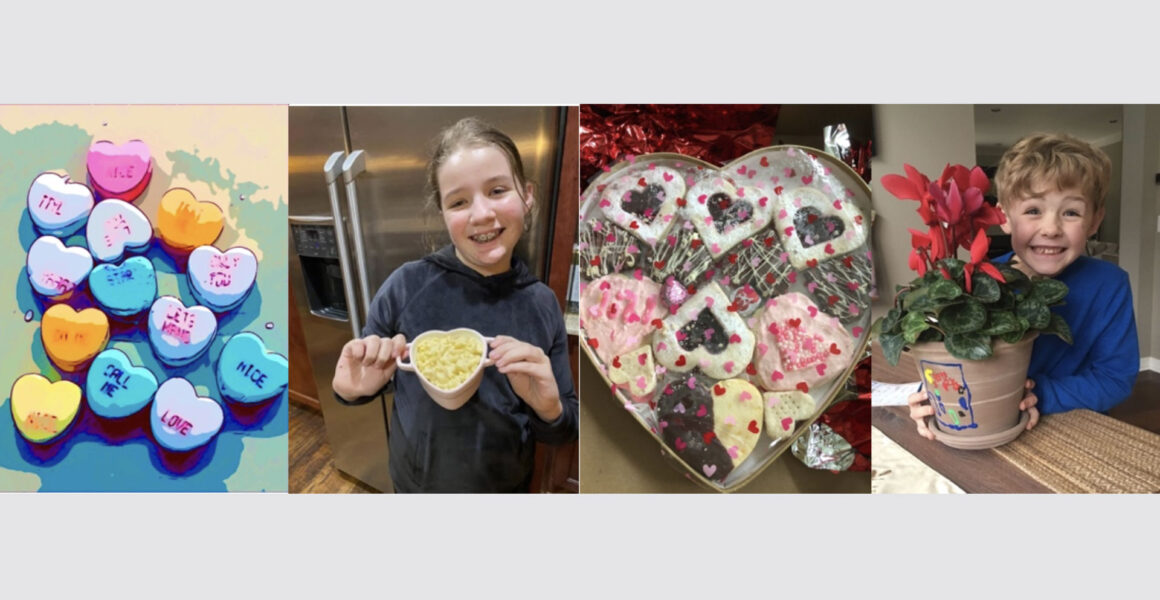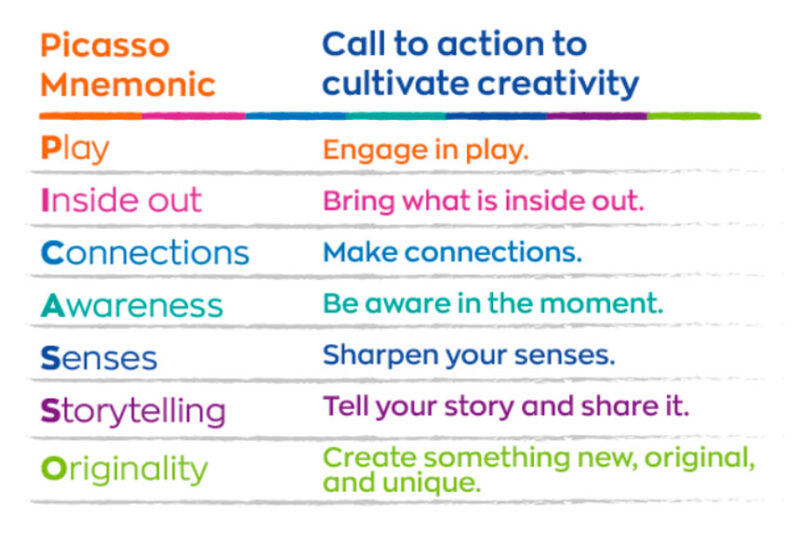Savor All Things Valentine

Savor was one of the “shimmery” words my grandchildren and I collected through the years. I learned the term after listening to an interview with poet Elizabeth Alexander. She described to the journalist, Krista Tippett, that words that shimmer are unusual words with power that cause kids to stop and want to hear them again. That was the case when my Grands heard “savor” at a young age. Once they learned its meaning, they had fun using it in various ways. They delighted in it as a reminder to slow down, pause, and enjoy. It reinforced messages and built skills in mindfulness, that is, pausing, paying attention in the moment, and tuning into the senses. When they were eating or drinking something, they learned to savor by engaging all the senses.
In my book, My Macaroni Sings, Your Guide to Cultivating Creativity in Children, I have written about shimmery words and guided tastings. The guided tasting of a macaroni and cheese recipe we made is what led my Grands to exclaim: “My Macaroni Sings!”. That story is in the creative experience chapter called “Culinary Arts and Food.” For Valentine’s Day I invite you to try the tasting guide I describe with chocolates, cupcakes, cookies, or your special dinner—perhaps mac and cheese. Then listen for the music of the flavors amid all the celebrations of love.
A Guided Tasting Experience
Ready to eat? The temptation is always to dive right in as soon as we set out treats or a meal. Here is a mindfulness practice to try first. It is in the Culinary Arts experience chapter of my book. I like to create curiosity by saying there is a secret ingredient for tasting.
- Pause and breathe—close your eyes, take a deep breath, and count to three.
- Eyes and sight—open your eyes and feast them on the food or treat in front of you. Ask children to describe what they see. You might ask if their eyes make them hungry.
- Nose and smell—pause and use your nose to smell. Ask children what they smell, what their nose feels like when it sniffs the fragrances, and the aroma makes them hungry.
- Mouth and taste—although eager to eat, explain to children there is a secret to tasting. Ask if they know it. If not, tell them it is to pause with their first bite, before swallowing. Ask them what flavors they taste. Ask what their tongue is doing while they taste. To help them become immersed in the experience and for fun, ask them if their food makes a sound. Questions and conversation are fun while exploring different tastes with different foods and talking about taste buds and flavors.
A good wrap-up discussion is asking what they savored most in the tasting experience and if they found the secret ingredient. It will likely yield different perspectives which is also fun to explore together. It offers a chance to further cultivate skills in being perceptive of others, accepting and valuing differences, as well as intentionally pausing to tune into the senses. A conversation about love is always in order.
The experience and the sets of skills practiced can be used when preparing and eating almost any meal and with desserts and snacks. It is foremost learning and practicing mindfulness while eating. That is, pausing, becoming aware of each of the five senses, and being present to the parts they play in enjoying food and savoring the experiences. The senses can sometimes be neglected when eating quickly or when children are not taught to pause and savor food in different ways.
Seven Practices of Cultivating Creativity
Awareness and Senses are two of the seven practices I describe to intentionally cultivate creativity. Below is a chart of all seven. They can be mixed and matched or used in no particular order. When intentionally practiced over time, powerful mindsets and skillsets of creativity are developing. I’ve used the word PICASSO as a mnemonic, that is a memory device that makes it easy remember it. This is not because Picasso was a famous artist, although he was, it is because he was gifted in many actions that build creative muscles.

Let PICASSO become a shimmery word and call to action for you! Use its power to remember each of the seven practices and actions to grow creativity with children. Join me on my mission to empower children for lifeby intentionally cultivating mindsets and skillsets of creativity now. Next month I will begin to describe mindsets and skillsets for each of the seven essential elements. They need to be developed and reinforced over time because one of the truths about creativity is—if you don’t use it, you lose it. Love creativity!




